Professor Mark McCourt's talk
 in Ritsumeikan
in Ritsumeikan 
Professor Mark McCourt's talk
 in Ritsumeikan
in Ritsumeikan 
(December 8, 2008) Program
Opening talk (16:10-16:30)
"An Overview of Illusions of Brightness"
Akiyoshi Kitaoka, professor Ph.D
(Department of Psychology, Ritsumeikan University)
since December 2, 2008
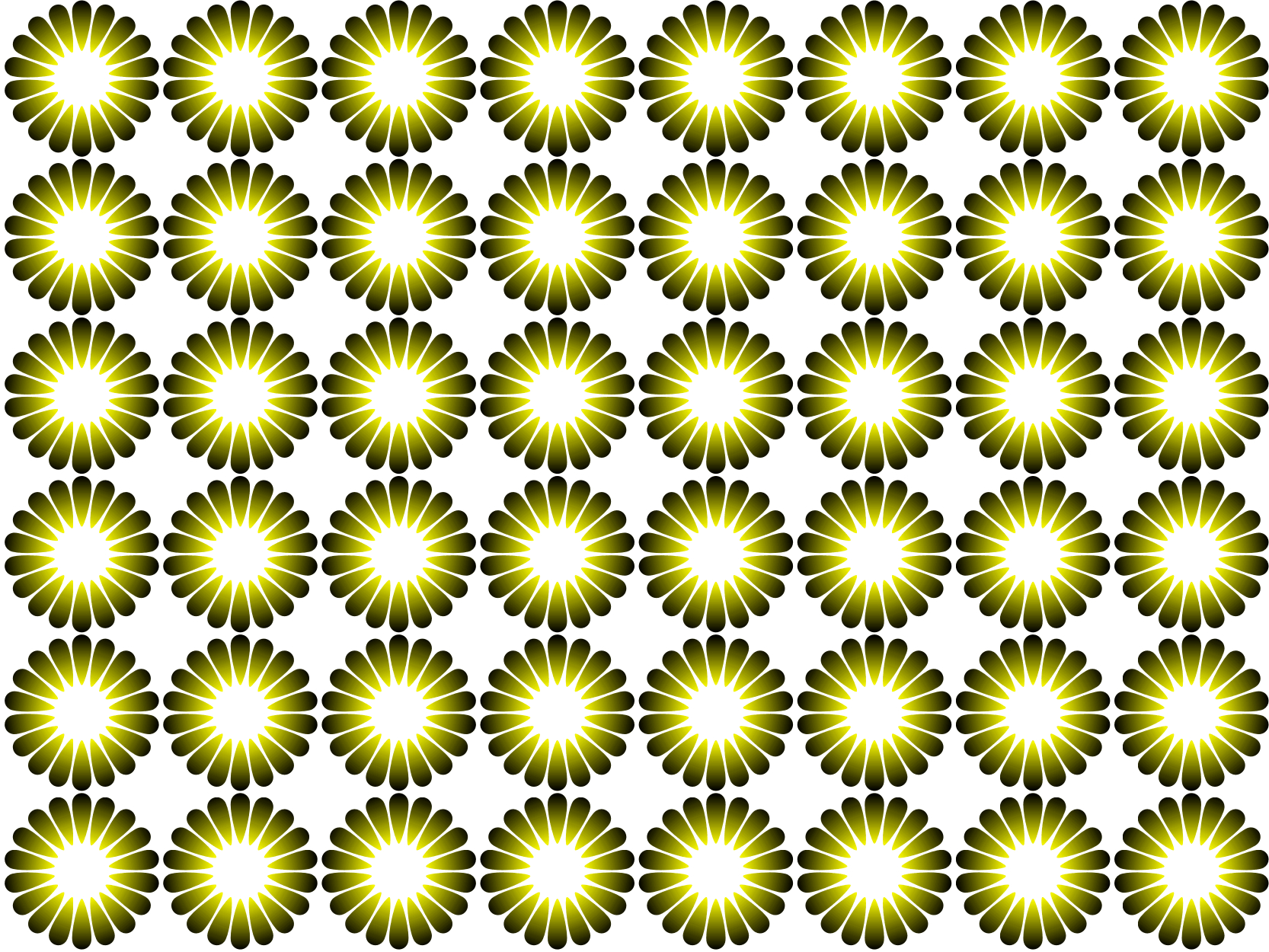
"Light of chrysanthemums"
The center of a flower appears to be bright.
Copyright Aiyoshi Kitaoka 2005 (April 5)
"The morning sunlight"
It appears as if intense morning sunlight were projected.
Copyright Akiyoshi.Kitaoka 2005 (April 5)

These "light-shedding" effects are called "counterphase photopic phantoms" (Kitaoka, Gyoba and Sakurai, 2006) or "glare effect" (Zavagno, 1999).
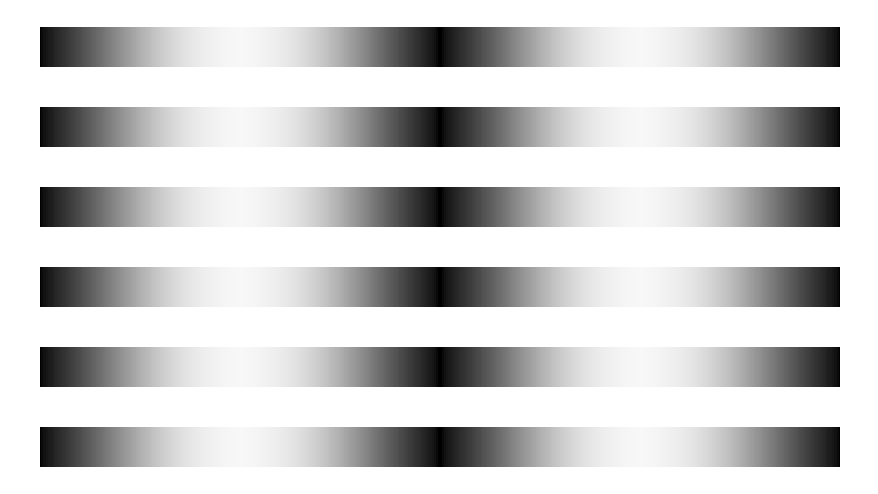
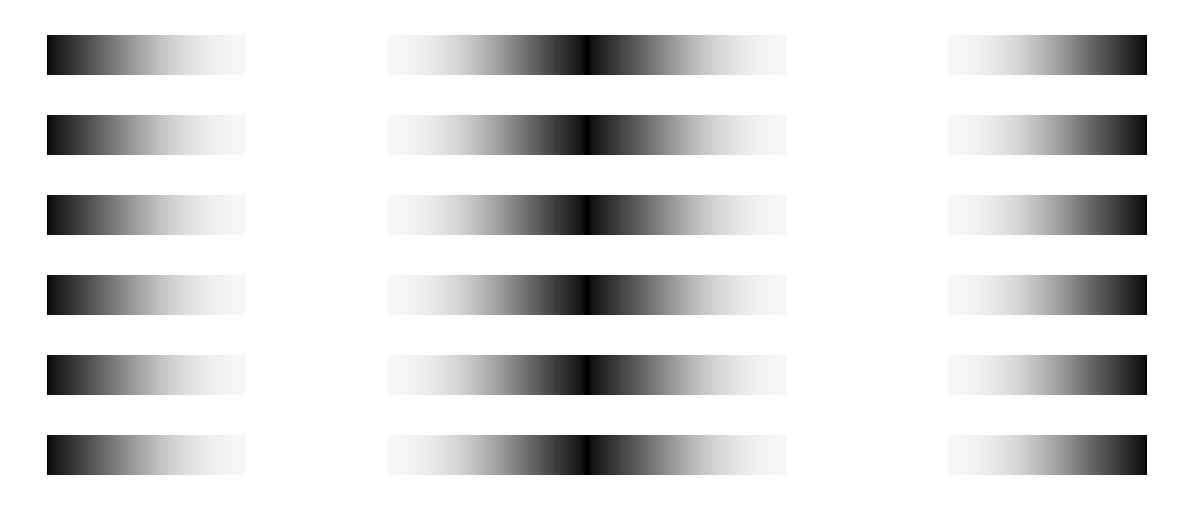
Kitaoka, A., Gyoba, J., and Sakurai, K. (2006) Chapter 13 The visual phantom illusion: a perceptual product of surface completion depending on brightness and contrast. Progress in Brain Research, 154 (Visual Perception Part 1), 247-262. PubMed PBR Reprint request to me
Zavagno, D. (1999) Some new luminance-gradient effects. Perception, 28: 835-838.
That is, this light-shedding effect is composed of
Lower stage: Counterphase brightness induction
Higher stage: Apparent in-phase brightness induction
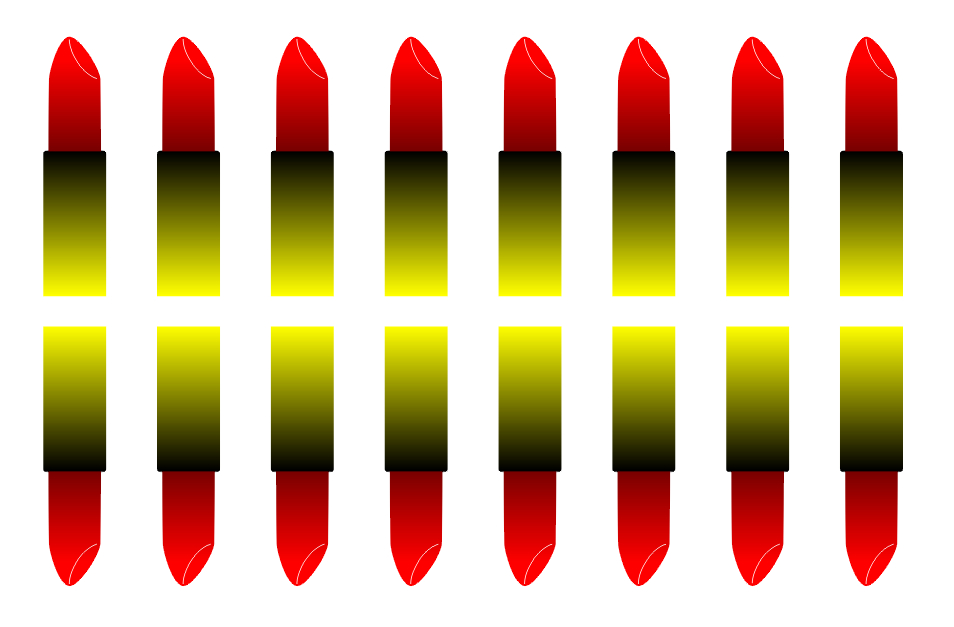
"Lipstick rockets"
The upper row appears to move upward while the lower row downward. In addition, the gap appears to glare.
Copyright Akiyoshi Kitaoka 2006 (March 13)
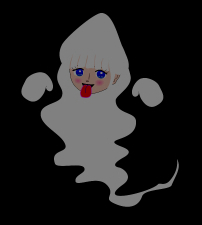 What is visual phantom?
What is visual phantom?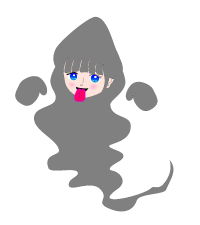
 The visual phantom illusion is a visual completion phenomenon and the basis
of the perception of mist or light-shedding.
The visual phantom illusion is a visual completion phenomenon and the basis
of the perception of mist or light-shedding.
Dark phantoms
(i.e. standard phantoms)
The visual phantom illusion refers to a phenomenon that an illusory grating appears to bridge the occluder that occludes a luminance-modified grating. When the luminance of the occluder is the lowest luminance of the grating, dark parts appear to be continual in front of the occluder.
Tynan, P. & Sekuler, R. (1975). Moving visual phantoms: A new contour completion effect. Science, 188, 951-952.
Genter, C. R. II. & Weisstein, N. (1981). Flickering phantoms: A motion illusion without motion. Vision Research, 21, 963-966.
Gyoba, J. (1983). Stationary phantoms: A completion effect without motion and flicker. Vision Research, 23, 205-211.
Light phantoms
When the luminance of the occluder is the highest luminance of the grating, light parts appear to be continual in front.

(When the cursor is placed on this image, the occluder becomes dark)
Sakurai, K. & Gyoba, J. (1985) Optimal occluder luminance for seeing stationary visual phantoms. Vision Research, 25, 1735-1740.
Question
Is the induced brightness in-phase?
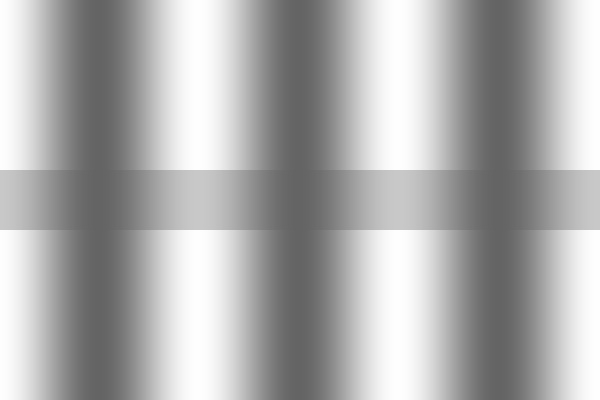
(When the cursor is placed on this image, the surround becomes homogeneous)
Dark columns appear to be continual in front. This appearance agrees with that of visual phantoms.
Is the induced brightness counterphase?
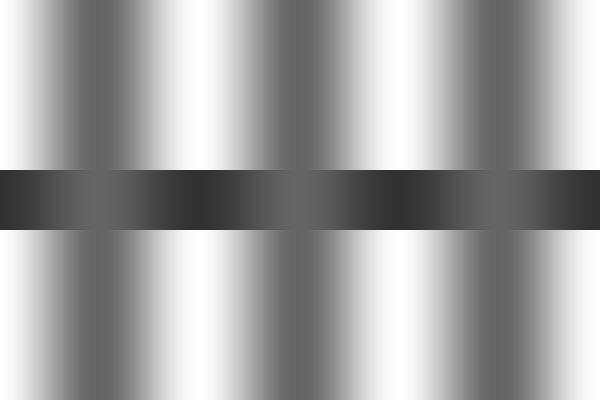
(When the cursor is placed on this image, the surround becomes homogeneous)
Dark columns appear to be continual in front. This appearance agrees with that of visual phantoms.
Finding: The brightness induction in stationary visual phantoms is not in phase but counterphase, like grating induction.
McCourt, M. (1994) Grating induction: A new explanation for stationary phantom gratings. Vision Research, 34, 1609-1617.
May, J. G., Brown, J. M. and Roberts, S. (1999) Afterimages, grating induction and illusory phantoms. Vision Research, 39, 3025-3031.
Grating induction
When the luminance of the occluder is placed between the highest and lowest luminances of the grating, strong counterphase brightness induction appears in the occluder and gratings do not appear to be continual.
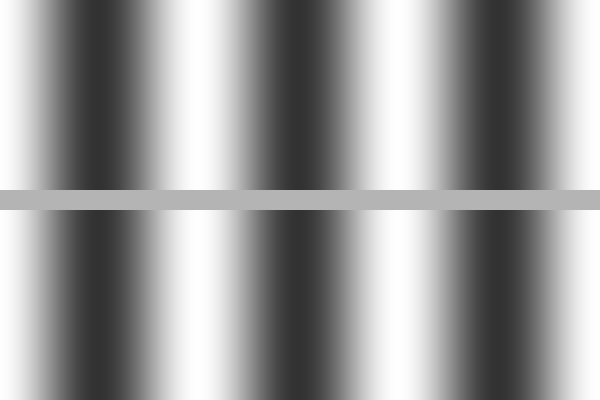
(When the cursor is placed on this image, the occluder becomes dark)
McCourt, M. E. (1982) A spatial frequency dependent grating-induction effect. Vision Research., 22, 119-134.
An explanation of stationary phantoms
Stationary phantoms are explained in terms of perceptual transparency, in which the surrounding grating induces counterphase lightness induction in the occluder and generates unique transparency that gives the continuation and the fixed depth of phantoms.
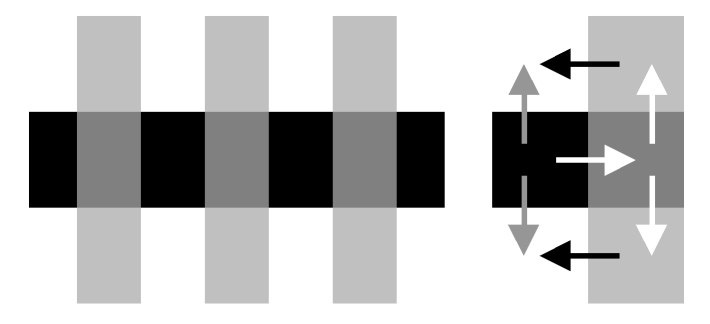
Unique transparency
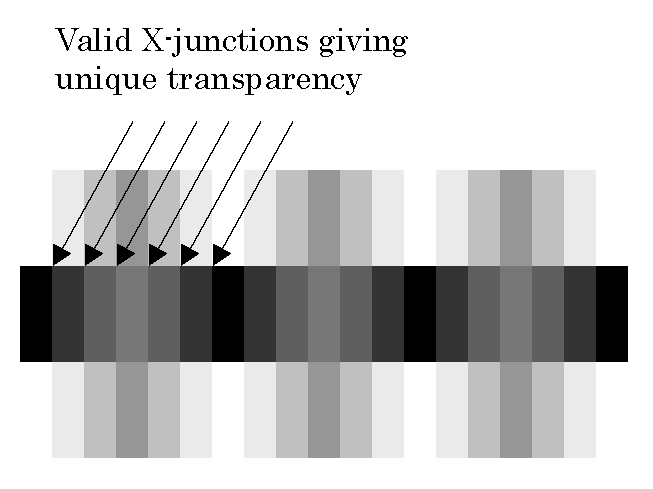
Schematic explanation using unique transparency
Kitaoka, A., Gyoba, J., Kawabata, H., and Sakurai, K. (2001). Perceptual continuation and depth in visual phantoms can be explained by perceptual transparency. Perception, 30, 959-968.
Our claim: The characteristics1) of visual phantoms can be explained with perceptual transparency2) that is cooperatively formed by the inducing gratings and induced ones in the occluder.
1) Phantoms always appear to be continual in front of the occluder.
2) Unique transparency in this case.
"Mixed" phantoms
Although it has long been thought that the visual phantom illusion is a phenomenon of visual completion of brightness, mixed phantoms shown below are not paradoxical in our model using perceptual transparency.
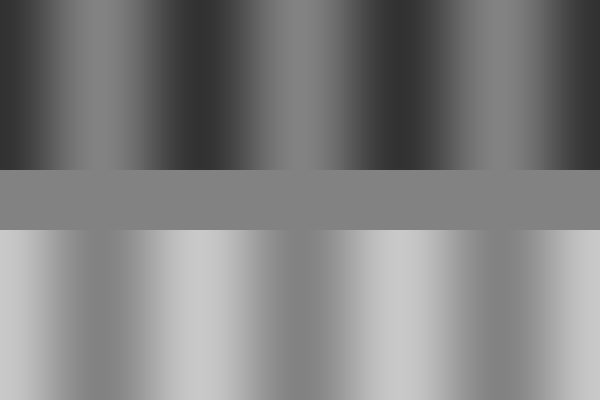
Luminance phases are reversed, but phantoms appear.
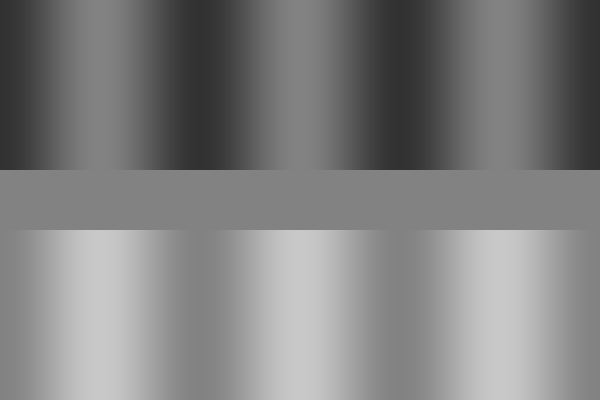
Luminance phases are aligned, but phantoms do not appear.
Our claim: Brightness induction is not sufficient to produce visual phantoms. Perceptual transparency is necessary.
Two-stage model

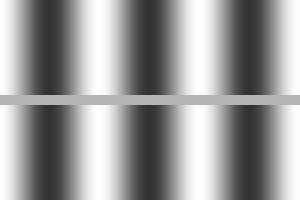


Kitaoka, A., Gyoba, J., Kawabata, H., and Sakurai, K. (2001). Perceptual continuation and depth in visual phantoms can be explained by perceptual transparency. Perception, 30, 959-968. ("Scotopic phantoms" are stationary phantoms)
The brightness induction of stationary phantoms is in-phase
when shortly presented
50-ms presentation for stationary phantoms
Phantoms are in-phase with inducing gratings if the presentation time is shorter than about 150 ms.
Grating induction is also in-phase when shortly presented
50-ms presentation for grating induction
500-ms presentation for grating induction
When the presentation time is longer than about 150 ms, counterphase induction appears.
Our claim: The brightness induction of visual phantoms is the same as that of grating induction.
back to Grating induction
McCourt, M. E. (1982) A spatial frequency dependent grating-induction effect. Vision Research., 22, 119-134.
Blurred grating induction
It should be noted that the "occluder" is physically not homogeneous but the luminance grating of the occluder is counterphase with its apparent brightness grating.
This kind of grating induction is thought to explain the Mimas-and-the-F-ring illusion, which was reported this year.
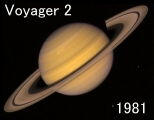 Mimas-and-the-F-ring illusion (Lakdawalla, 2008)
Mimas-and-the-F-ring illusion (Lakdawalla, 2008)
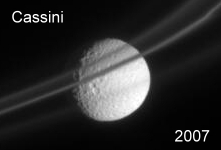
Mimas and the F ring
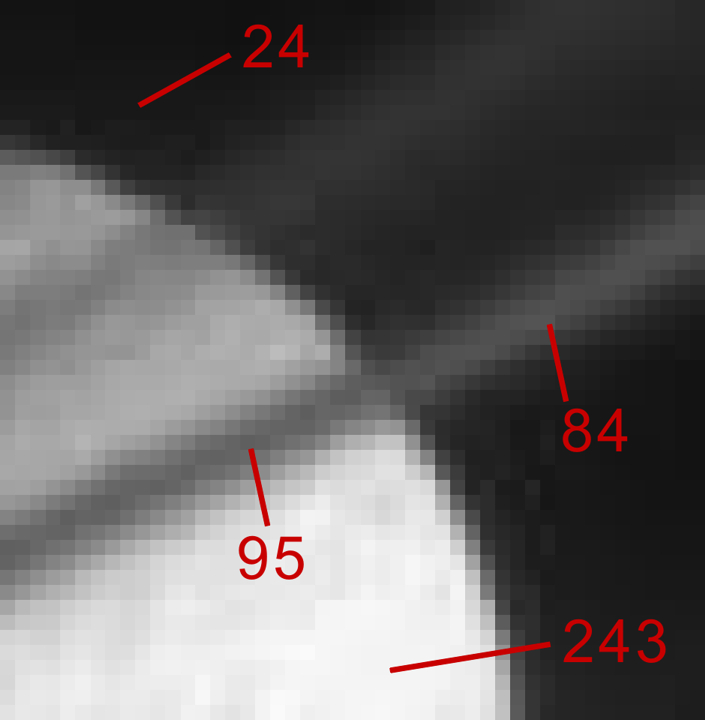
Another display of counterphase brightness induction

The left bar is the same luminance as the right one in each row, but the left one appears to be darker than the right.
As an example of this type of brightness induction,
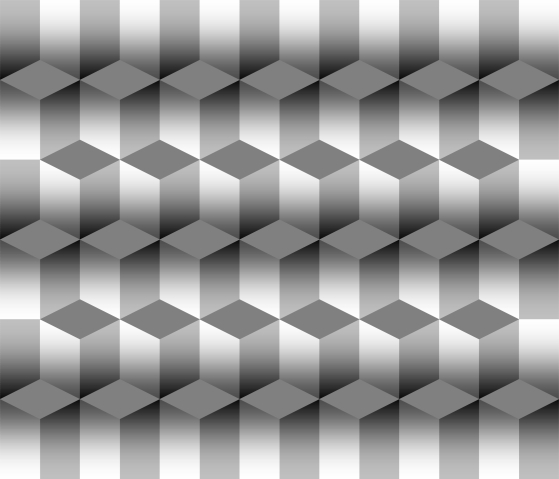
Logvinenko illusion
Although gray diamonds are identical, there appear to be light-gray ones and dark-gray ones.
Logvinenko, A. D. (1999) Lightness induction revisited. Perception, 28, 803-816.
Many brightness illusions have been explained by Mark and Professor Barbara Blakeslee.
e.g.,
McCourt, M. E. (2005) Comparing the spatial-frequency response of first-order and second-order lateral visual interactions: Grating induction and contrast-contrast. Perception, 34, 501-510.
Blakeslee, B. and McCourt, M. E. (2001) A multiscale spatial filtering
account of the Wertheimer-Benary effect and the corrugated mondrian. Vision Research, 41, 2487-2502.
Blakeslee, B. and McCourt, M. E. (1999) A multiscale spatial filtering
account of the White effect, simultaneous brightness contrast and grating
induction. Vision Research, 39, 4361-4377.
Blakeslee, B. and McCourt M. E. (1997) Similar mechanisms underlie simultaneous brightness contrast and grating induction. Vision Research, 37, 2849-2869,1997.
 (Benary effect)
(Benary effect) 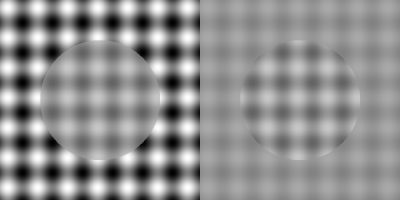 (contrast-contrast)
(contrast-contrast)
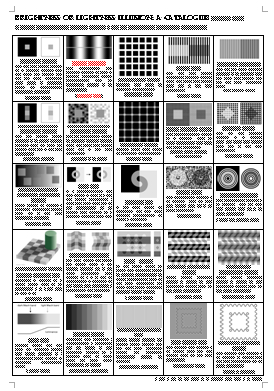
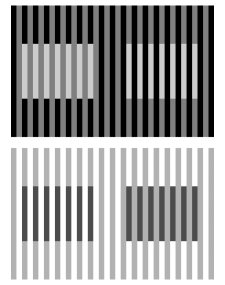 (inverted White's effect)
(inverted White's effect)
For illusions of brightness or lightness induction, please see the catalogue
entitled "Brightness or lightness illusion: a catalogue (version 2008)".
File (MS-Word) (13MB)
For more, Lightness illusion 3

Mark's talk is soon starting!